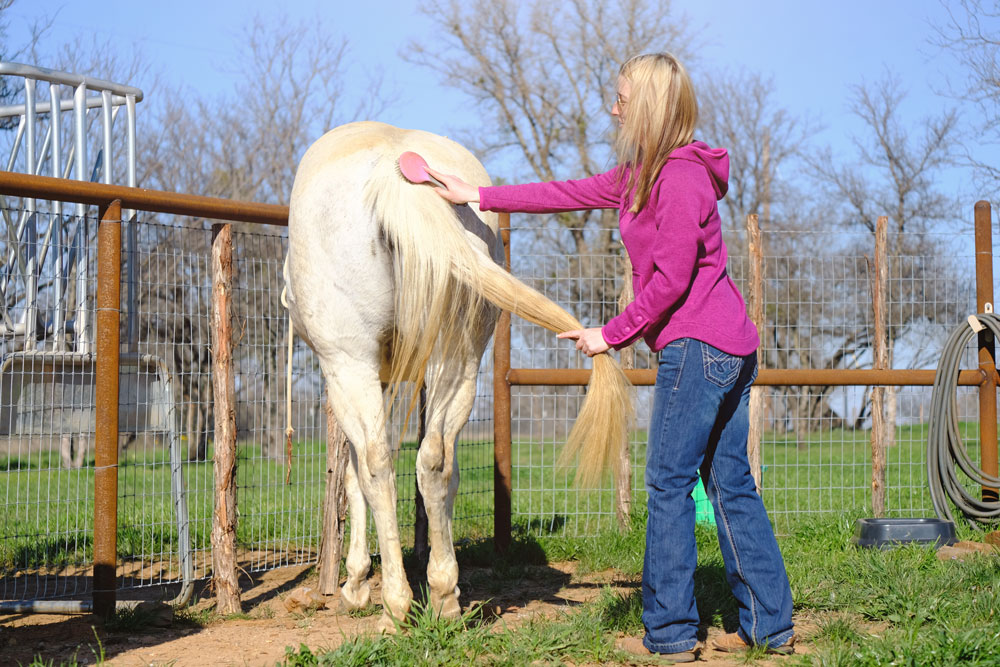
“Sarcoid is probably the most common type of skin cancer in horses, but we also see squamous cell carcinoma and melanoma,” said Stephen D. White, DVM, DACVD, Professor and Chief of Service, Dermatology, School of Veterinary Medicine, University of California, Davis. “Squamous cell carcinoma is usually slow-growing, but in later stages can not only enlarge but can metastasize and travel to other parts of the body. We have seen it on the prepuce of the penis on male horses and around the vulva of mares. It is most common on, but not limited to, areas of unpigmented skin or thinly haired areas.”
Sarcoid can also occur on the eyelids (including the third eyelid) or other parts of the eye.
Prognosis is always better if you can catch it early, before it spreads. Treatment is usually by incision to remove the growth. Cisplatin has also been shown to be effective when injected into the growth, if it is in an area where the cancer can’t be surgically removed.
Melanoma
Melanoma is a different type of skin cancer that tends to show up mostly in older gray horses, although it can occur in any horse.
“In young horses that are less than 1½ years old, it is usually benign and might be surgically removed,” said White. “Whereas in older gray horses, the growths may spread internally. Your veterinarian should be consulted for a proper diagnosis.”
These melanoma growths are often found around the anus or vulva or under the tail, but can appear anywhere on the body. These smooth, black lumps are often slow-growing and might never become a problem. Occasionally, however, the growth can spread internally.
Melanomas can be more problematic in some locations than others, and this can determine whether or not treatment or removal is attempted.
“I have seen some gray horses with melanomas at the base of the tail, and these growths have already spread internally,” said White. “It is important to have these checked by your veterinarian.”
There are some other kinds of skin cancer in horses, but they are quite uncommon.


